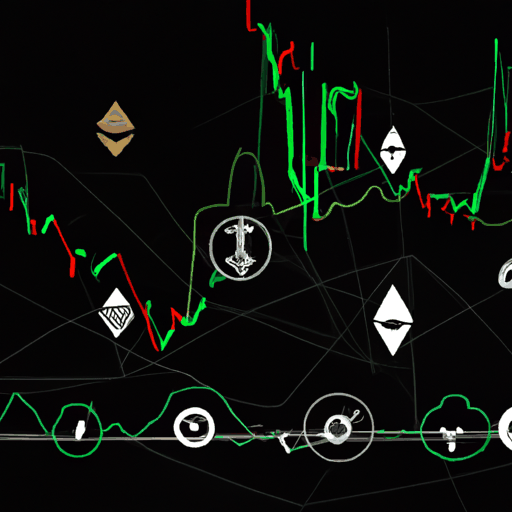
Bitcoin Market Update: Future Slump, Retail Decline, and Bearish Warnings Persist
By: Isha Das
The volatility Bitcoin experienced this week had a particularly interesting impact on the derivatives market. Between June 23 and June 27, BTC lost its relatively stable support at above $64,000 and dropped to $60,000, with a brief dip below $60,000 before recovering on June 25.
While the price drop might not seem that significant when looking at long-term price action, a drop below $60,000 is an important psychological milestone for traders. This is why the 6% drop had a notable impact on derivatives. Open interest in Bitcoin futures dropped from $33.33 billion on June 23 to $31.39 billion on June 27, reaching its lowest point since May 17.
The primary reason for this decrease was forced liquidations. As the price fell sharply, a significant number of traders with leveraged long positions likely faced margin calls. Unable to meet these calls in time, their positions were liquidated, which could have added to the selling pressure and led to a further drop in open interest.
This often creates a feedback loop, exacerbating the price decline as liquidations trigger additional sell-offs. Furthermore, the declining price likely prompted traders to become more risk-averse. With heightened volatility and uncertainty, traders might have been discouraged from opening new futures contracts, opting instead to reduce exposure until the market stabilizes.
While the futures market contracted, the options market grew. Open interest in Bitcoin options increased from $20.28 billion on June 23 to $21 billion on June 26, despite a brief dip to $20 billion on June 25.
The increase in options OI during this period suggests that traders turned to options as a hedge against potential price volatility. Options are a flexible tool for managing risk, allowing traders to protect their positions and speculate on price movements without the same risk associated with futures. The rise in OI, particularly in a period of price decline, shows that traders were looking to mitigate risk and position themselves for more volatility.
CoinGlass data shows that most traders are preparing for upward volatility. As of June 27, 65.71% of the options open interest consisted of call options, with the 24-hour volume favoring calls at 57.72%. The clear dominance of call options shows a bullish sentiment prevailing, and traders are positioning for price recovery or looking to capitalize on lower prices with limited downside risk.
On-chain data shows the Bitcoin transfer volume of retail investors has seen a sharp decline recently, a sign that this group may be losing interest. The total BTC transfer volume for transactions valued between $1,000 and $10,000 has gone down recently. These transfers are considered relatively small, reflecting the activity level of retail investors.
The increase in transfer volume from earlier in the year would suggest the price surge ignited interest in the asset from these investors. The chart shows that a similar trend was also observed during the previous bull run. Sharp price action is generally exciting to retail investors, so it is not surprising that they tend to become more active during rallies.
As the chart shows, the Bitcoin transfer volume for retail-sized moves peaked in May and has since seen a sharp drawdown of 30%. This would mean that the bearish price action has made these investors disappear. Interestingly, the downtrend in the indicator persisted even when Bitcoin had made a recovery back above $70,000 a few weeks ago, which could have been a potential foreshadowing that this rally would never stay.
Despite a recent uplift in Bitcoin market price, which saw the crypto momentarily breach the $62,000 mark, the widespread consensus among crypto analysts suggests that this increase is temporary and that the bearish pressure is far from over. Prominent crypto analyst Willy Woo voiced earlier that the minor surge was primarily a “technical” response to oversold conditions and did not indicate underlying market strengths.
Woo remarked that although Bitcoin recently rebounded from a significant dip below $60,000, fundamental market indicators remain weak, signifying that the recent price action is not a reliable indicator of sustained recovery. According to Woo, the bounce back is driven by technical factors such as the TD9 reversal and a hidden bullish divergence rather than genuine market recovery.
The markets would correct for overselling, Woo explained, highlighting that current trading activities do not reflect a shift in the basic supply and demand dynamics essential for a genuine bullish market turnaround.
He further emphasized that spot buying needs to be substantially increased for a true bullish sentiment to take hold, which remains lackluster.
Woo further points out that speculative pressures are still rampant, with an excess of synthetic coins in circulation yet to be replaced by genuine market purchases. This imbalance underscores a market dominated by speculation rather than investment, with long-term sustainability in question.
The leading cryptocurrency by market cap has endured a tumultuous few months, marked by a significant downturn. After reaching a new high above $73,000 in March, Bitcoin has since retreated by nearly 20%, recently rebounding to just over $61,000 after briefly dipping to a 24-hour low of $60,606. This volatility aligns with analyst comments suggesting that bearish trends may continue to dominate. An analyst recently noted on X that Bitcoin holders might face further declines.
The analyst pointed to the selling patterns of long-term holders (LTHs) during previous cycles, predicting a potential 40% drop from all-time highs. Meanwhile, on-chain data indicates that Bitcoin is hovering near a threshold that typically marks the transition into the 'euphoria' phase of market cycles.
At the time of writing, Bitcoin is trading at around $62,200, down over 4% in the past week.



